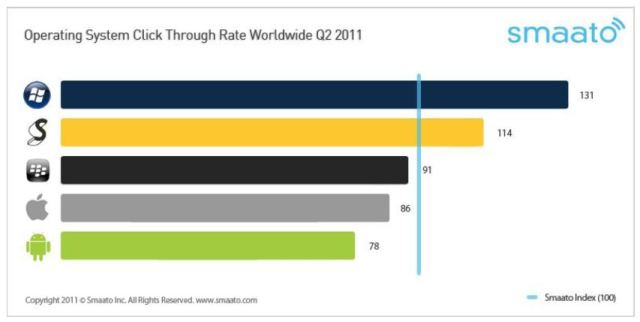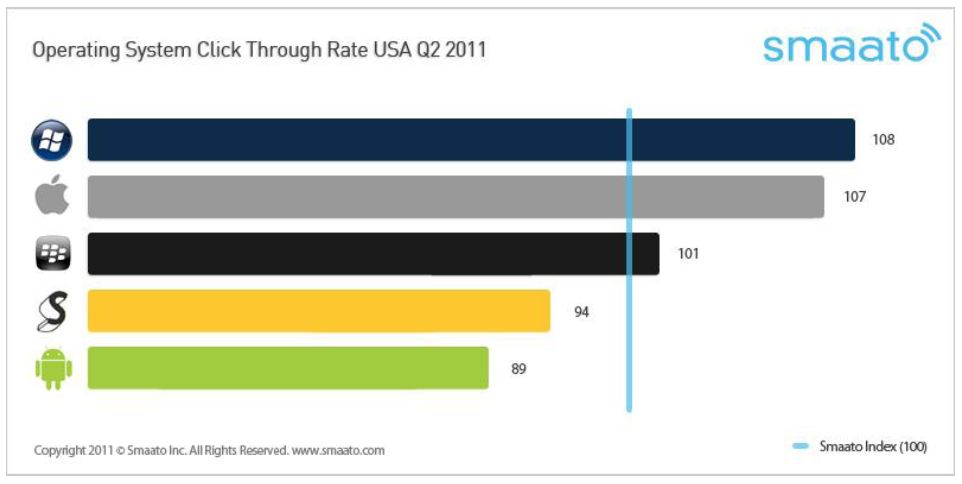|
CS1160: Introduction to Computer Science I |
||||||
|
Some Advertising and Monetization Metrics/Terms
CPM = cost per thousands of impressions
- What an advertisment network will pay you for showing 1000 ads (impressions)
- HOW TO FIGURE OUT HOW MUCH MONEY YOU MAKE FOR EACH AD SHOWN (impression)
- $10 CPM / 1000 impressions = $.01 per impression
eCPM = effective cost per thousand impressions
-
Total Earnings --- what you were paid by the Add/offer network in some period of time (week/month or whatever)
-
Impressions --- total number of adds/offers that were servered during this period of time.
- For example, let's imagine we have two custom channels named 'Blue Skyscrapers' and 'Red Rectangles', respectively, which reflect the types of ad formats we're testing on our site. During our test, the 'Blue Skyscrapers' channel receives 370 page impressions and $1.48 in total earnings. The 'Red Rectangles' channel receives 187 page impressions and $0.97 in earnings over the same period. To make these figures more comparable we calculate eCPM -- i.e., the estimated earnings for every 1,000 impressions received. We find that eCPM for blue skyscrapers is $4.00 while the eCPM for red rectangles is $5.18.
This means if we received 1,000 impressions of blue skyscrapers, we would earn roughly $4.00. But for 1,000 impressions of red rectangles, we would earn about $5.18. Therefore, assuming that our sample size is large enough, it is to our advantage to switch to red rectangles throughout our site because they generate more revenue per impression.
CPC (cost per click) or PPC (pay per click)
- Advertiser pays you when user click on an ad (pays nothing to simply show the ad/impression)
- You make more money when your CTR (see next) is higher --more clicks more $$$$
CTR = Click Through Rate
![]()
-
the number of click-throughs per ad impression, expressed as a percentage
- captures customers' initial response to websites (does not mean they bought anything)
- used as ONE measure of add effectiveness.
- many add agencies pay you only when the user clicks on the add (hence CTR is important here)
- DON'T Hold your breath-----The average click-through rate of 3% in the 1990s declined to 0.1%-0.3% by 2011
- by selecting an appropriate advertising site with high affinity (e.g., a movie magazine for a movie advertisement), the same banner can achieve a substantially higher CTR.
- personalized ads, unusual formats, and more obtrusive ads may result in higher click-through rates than standard banner ads
BY SMAATO CTR by platform in 2011, from smaato study -- Ranked: 1) Windows 2)Nokia 3)RIM 4)Apple 5) Android
[based on over 80 million ad requests and over 60 connected ad networks across 230 countries]
note: RIM (research in motion)- makes blackberry....,
US BASED ---- CTR by platform in 2011, from smaato study -- Ranked: 1) Windows 2)Apple 3)RIM 4)Nokia 5) Android
[based on over 80 million ad requests and over 60 connected ad networks across 230 countries]
Fill Rate
-
The number of times you get an advertisment from an ad network when you ask for one (in percentage) --- but, it is not that simple, it is a function of cost to....read on
Fill rate = (number of delivered ads / number of ad requests) * 100%
- WHY ISN'T IT 100 % --- well you and many other people/apps/organizations are all wanting to serve an advertisment and the network wants to serve it to places where it is likely to be succesfull AND where it doesn't cost them much to serve the add.
- So, if you say you will take less money to serve an ad over others you are more likely to get served ---- so bidding low is a key ---but, wait you want to make money too!! So, not too low.
- 2011 Fill rates (on average over 40 different advertising networks) According to Smaato, the worldwide average ad network fill rate was 18% in Q2, a 2% drop from last quarter and a 3% decline year-over-year. Among the 40 top ad networks in the world, fill rates varied widely, running anywhere from 3% to 58%.
- current economic conditions are a factor in the fill rates changing ---- better economy means more adds and higher fill rate. worse economy means less ads and lower fill rate.
- Changing fill rate also an an indication of an increasingly fragmentation of market --- more fragmentation (more networks, lower fill rate)..
Ad Network Response Time --- how long you have to wait
- Average time you have to wait to get an ad served
- 39 to 328 milliseconds (msec) for the top 10 networks worldwide. This translated to an average response time of 290 msec.

CPA - Cost Per Action
- here you get paid by advertiser ONLY when some action has been completed ---like a sale or download of something or a registration.

